Begun in 1976 under the direction of then dictator, General Augusto Pinochet, Chile’s legendary Carretera Austral ( Route, or in Spanish “Ruta”, 7 ) is considered one of the country’s most ambitious infrastructure projects. Prior to its construction most of Chile’s Patagonian land transportation had to cross the border into Argentina. It opened in stages with the last 100kms to Villa O’Higgins not opened until the year 2000. Plans exist to extend the road further south ( as far as Puerto Natales ) in the years ahead.
From Puerto Montt, travellers have the option of driving south east through Hornopiren with a couple of short ferries then connecting to the mainland town of Chaiten, or taking a ferry direct from Puerto Montt to Chaiten, or, a third option ( and the route we chose ) travelling southwest through the rural and more remote island of Chiloe as far as Quellon at which point a ferry makes the 4 hour crossing east to Chaiten. Since all roads/ferries lead to Chaiten it is to all practical intents the real beginning of ‘Ruta 7’. Before heading over to Chiloe we did venture down Route 7 about 50 kms – the drive was scenic and it took us to a highly recommended camp spot ( Puerto Montt’s options were not that appealing ).
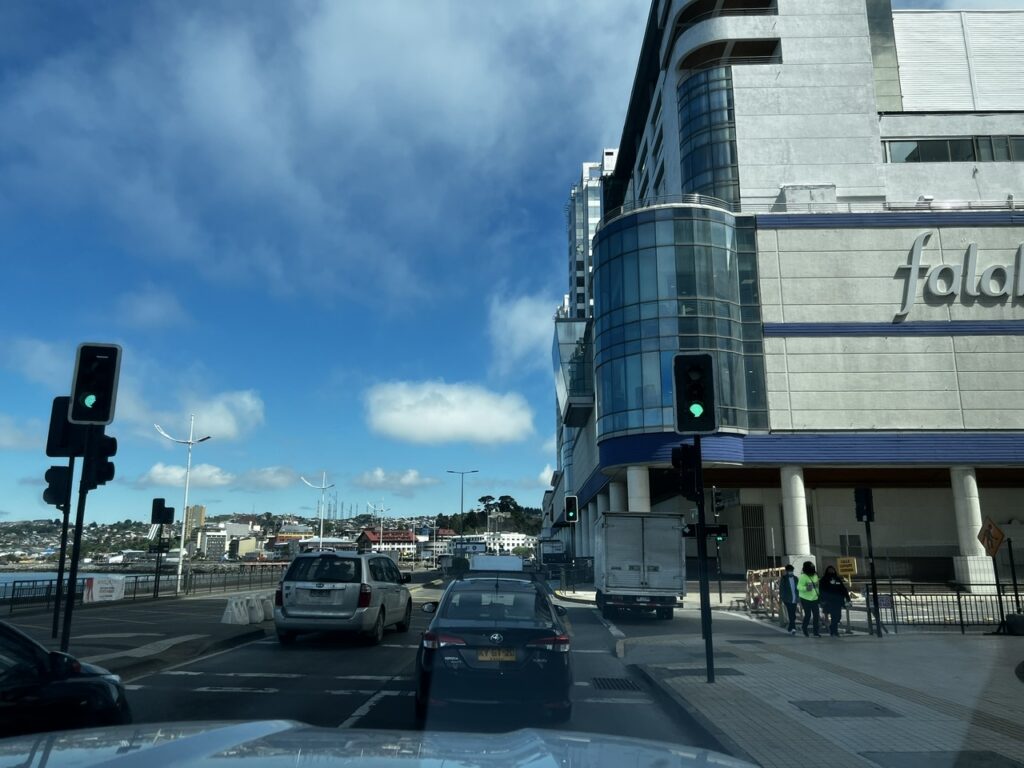
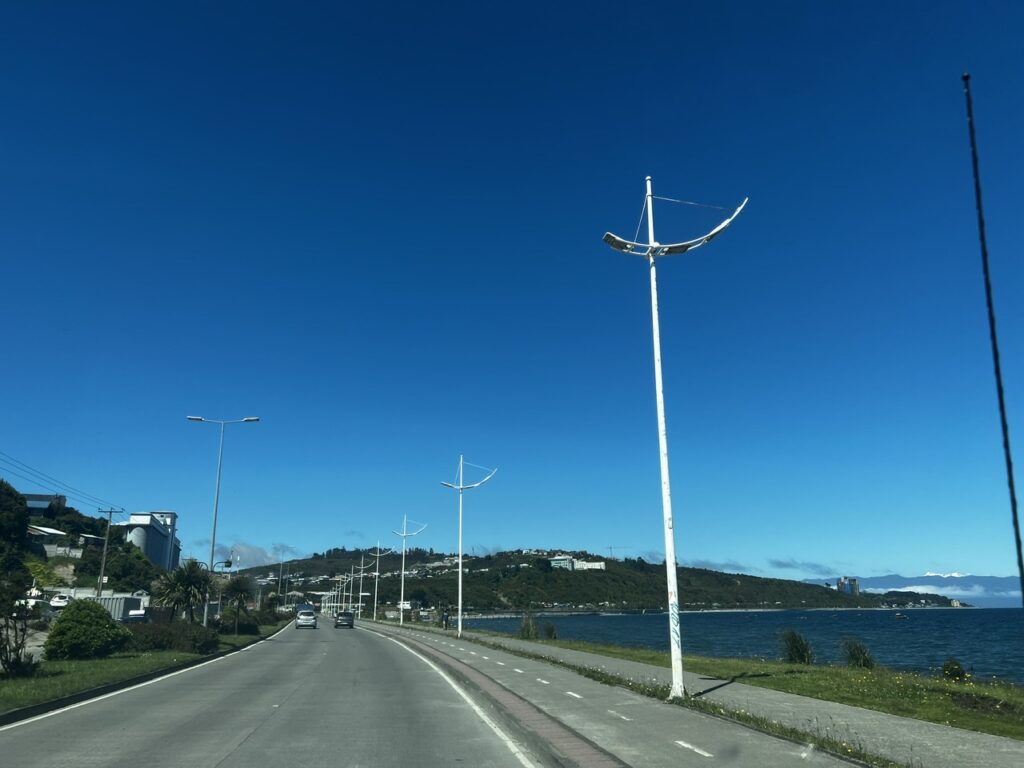
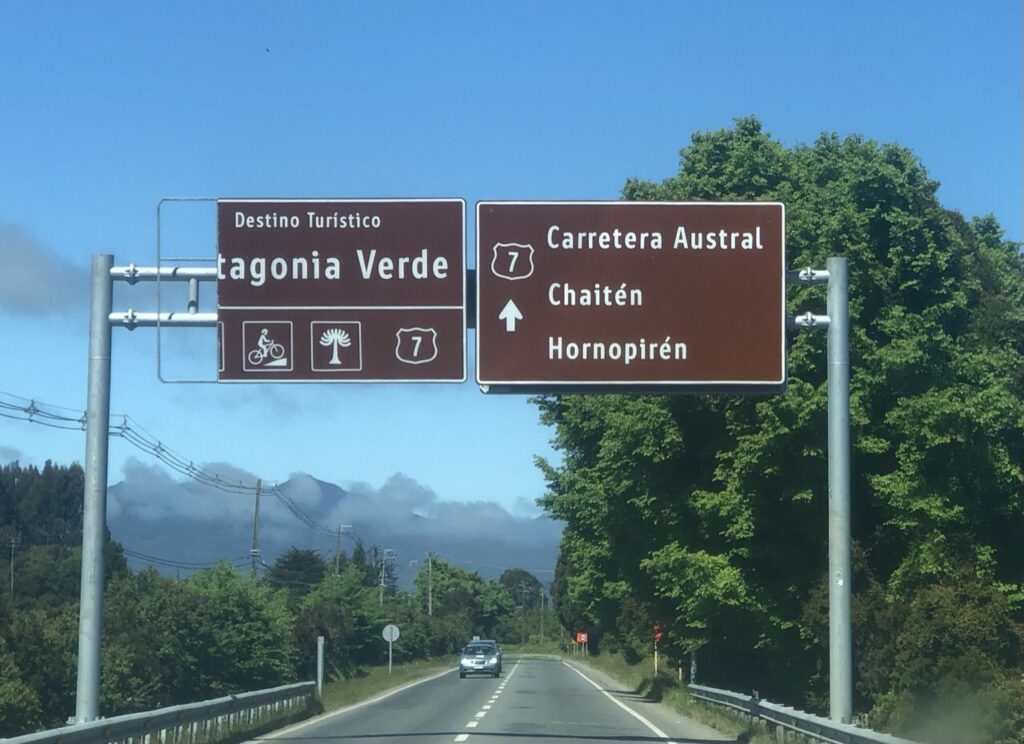
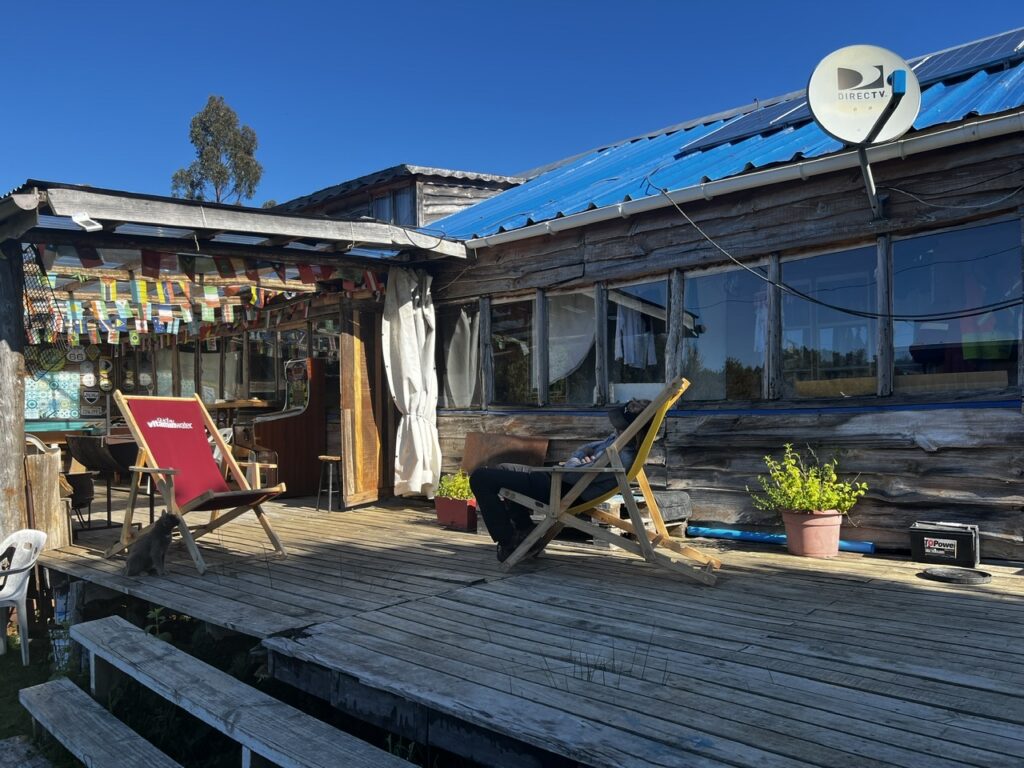
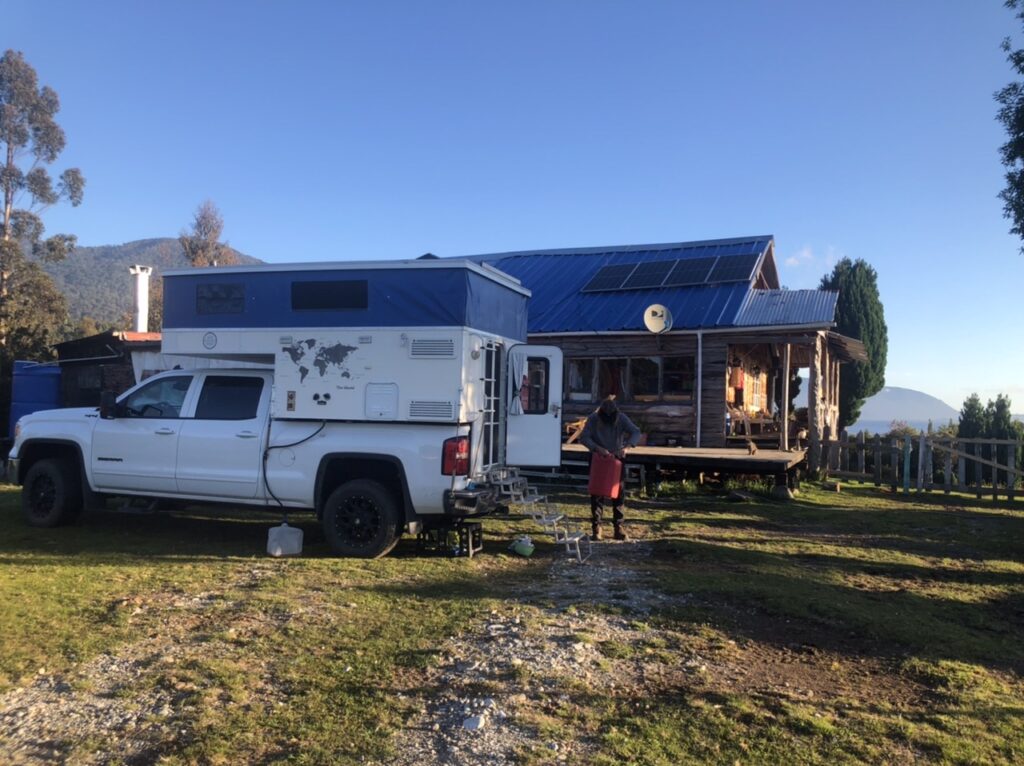
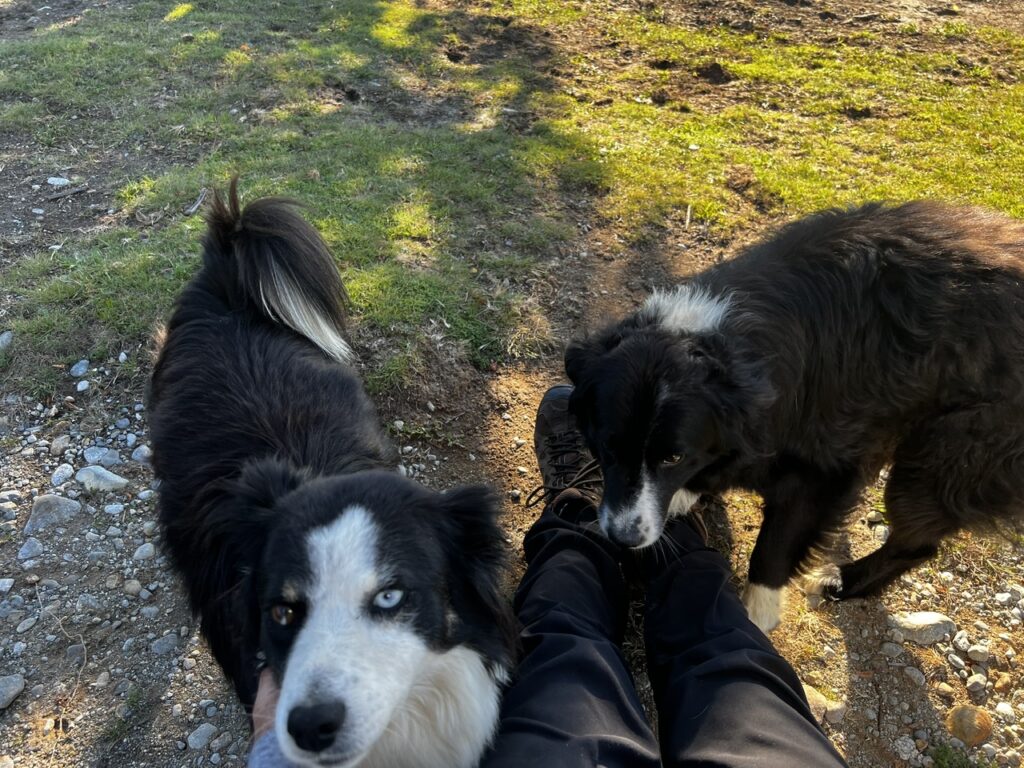
Chiloe island has a unique feel and distinct local flavor. More rustic, smaller towns, and miles and miles of rolling green hills, it reminded us at times of New Zealand ( albeit with fewer sheep ! ). Travel was slow with lots of construction and we managed to make a full day of the relatively short trip down from Puerto Montt. While the island offers countless side excursions and an impressive national park there would be more of that on the Carretera so our trip was limited to catching some of the sites in Castro ( capital city ) and some extensive stocking up of supplies in Quellon’s larger supermarkets – every guide we referenced suggested taking as much with you as you could carry given the limited options in Patagonia. Speaking of Patagonia, google “Where does Patagonia begin” and you will read that Chileans consider anything south of Puerto Montt to be Patagonia while Argentines reckon the boundary to be a bit further north in San Carlos de Bariloche – by either measure the Carretera Austral falls squarely within Patagonia.
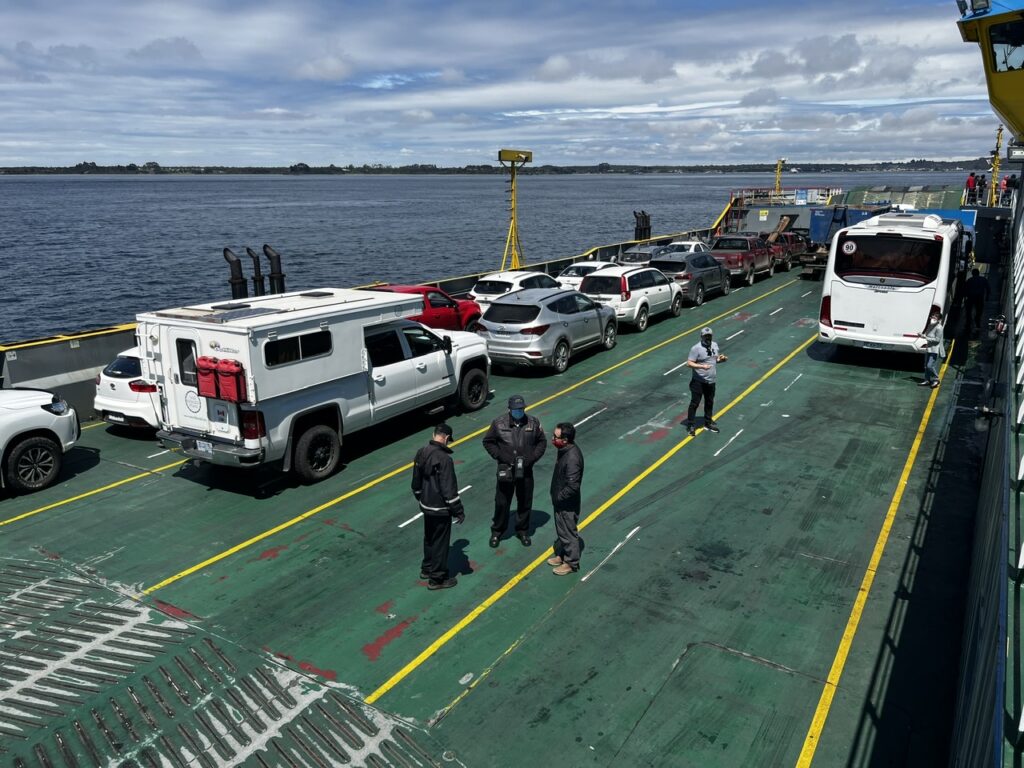
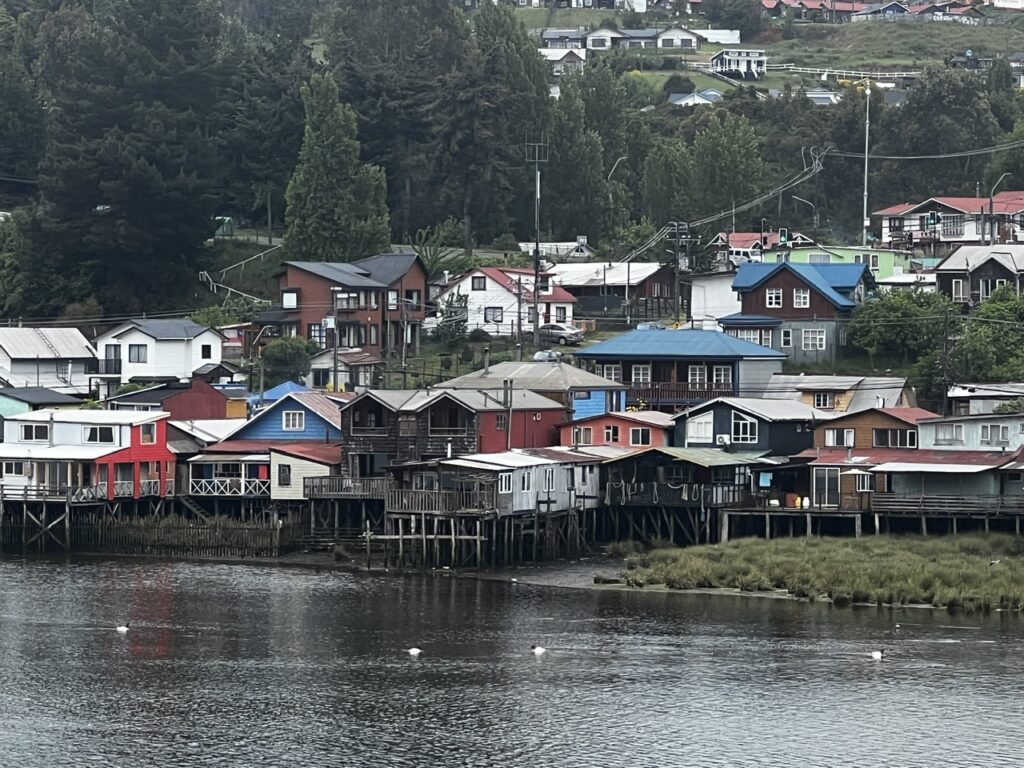
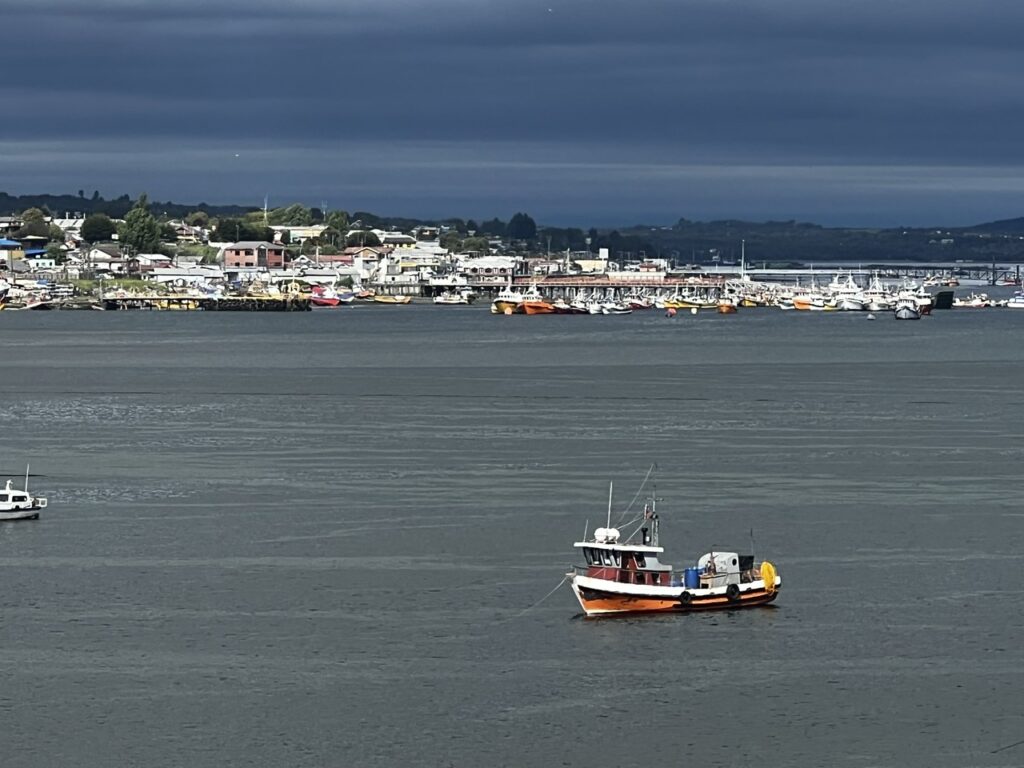
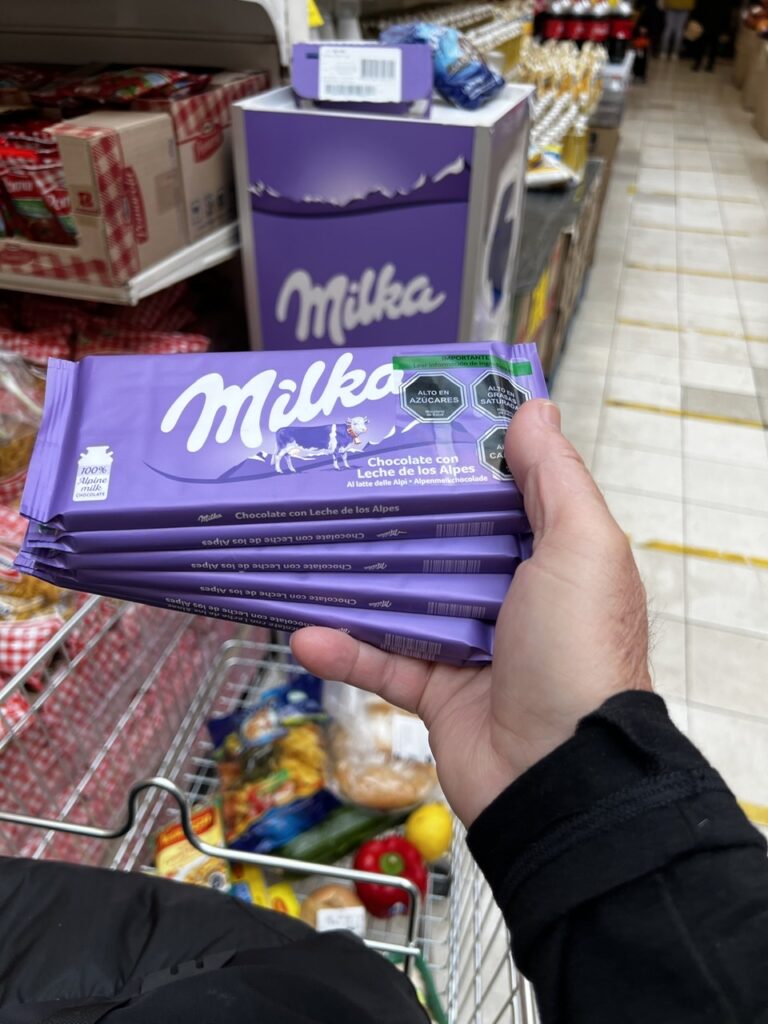
A pattern had emerged shortly after booking our flights back to Chile – we book, they change the flight, we rebook, they change the flights, we rebook….and on and on. There were 5 of these before actually getting to Chile…! Seems the Covid era impacts ferries as well – the original crossing to Chaiten ( from Castro ) was rerouted to Quellon, then the departure time was changed from 2pm to ( the ungodly hour of ) 11pm, then once again back to 7pm, before ultimately departing just after 8pm. One must stay flexible and always “tranquillo” as they like to say here.
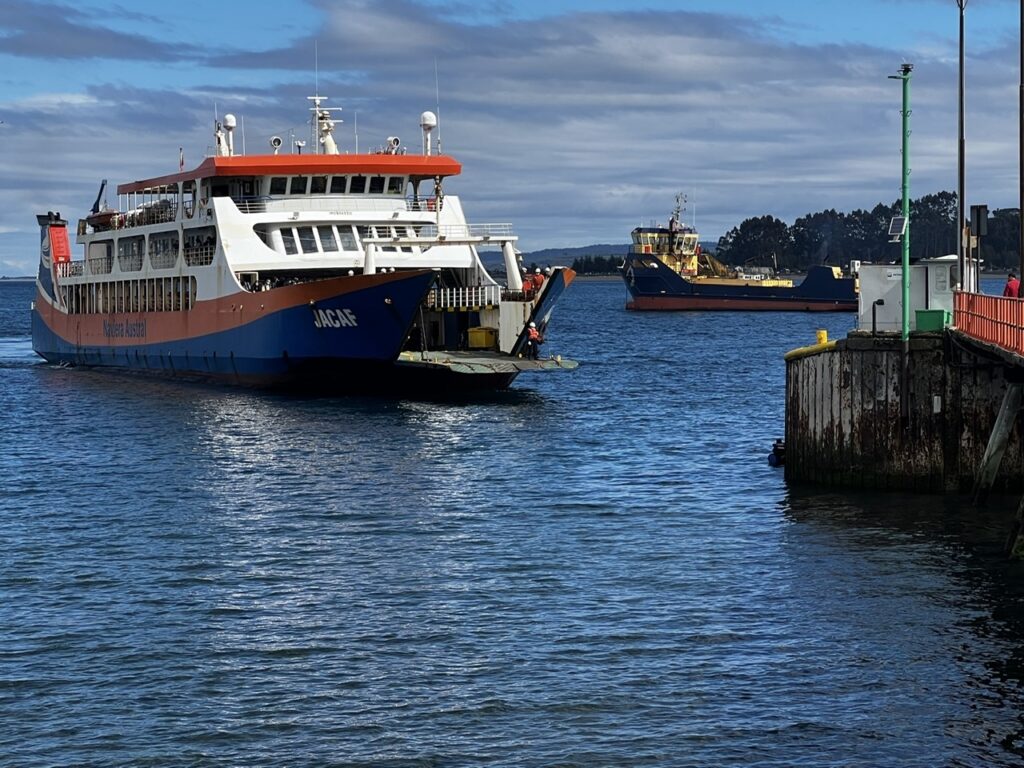
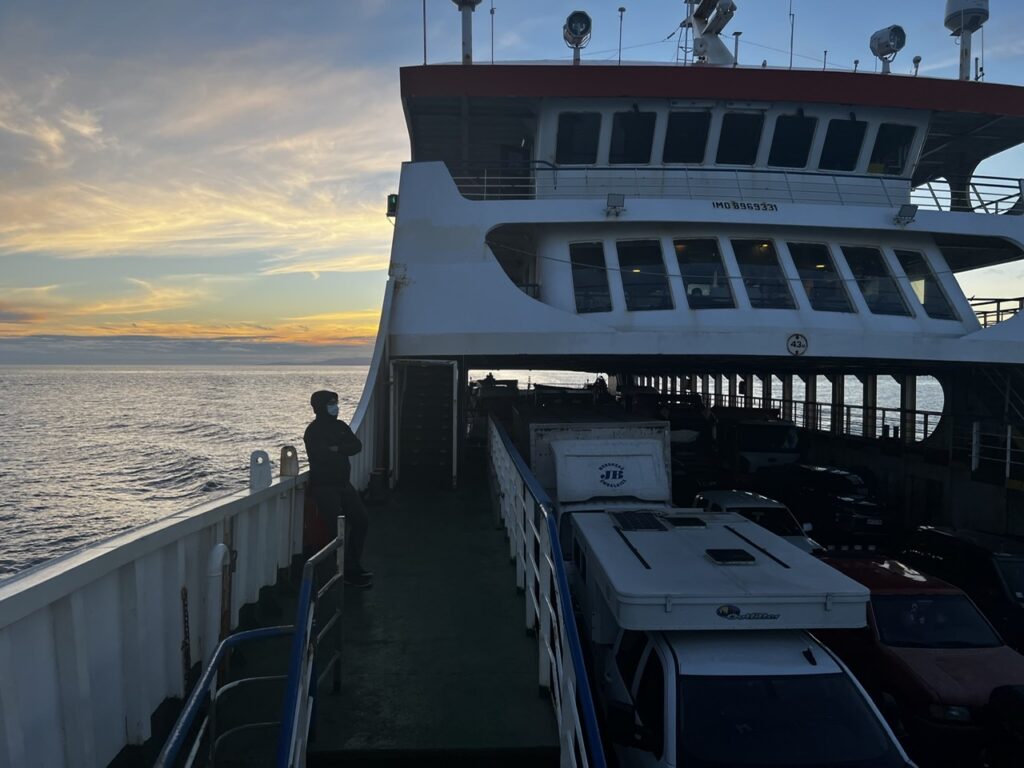
Chaiten is a rough, frontier-like town, and really just a jumping off point for destinations further south and the nearby national parks. The kind of place you can walk around in less than an hour, we used the (mostly rainy ) day to do some minor repairs, deal with a some computer issues and a last bag of laundry ( in what would likely be many rainy days ahead starting with dry clothes seemed prudent ). Most importantly, tiny Chaiten had a small ”Aduana” (Chilean customs) office and we popped in on the off chance it may be manned ( several others, in larger cities, had not been ) as we were quite desperate to address the nagging issue of our vehicle TIP ( temporary import permit ). Having left Chile suddenly, minus our vehicle, the original TIP had expired almost 18 months ago and we foresaw potential issues ( and possible penalties ) when exiting Chile and crossing to Argentina. Absent a sympathetic hearing here we’d be explaining this to a border official in a few weeks and completely at their mercy. Fortunately a most obliging Aduana agent ( Hector ) fully understood our plight and promptly made us “legal” again until January 2022 ! A huge stress gone.
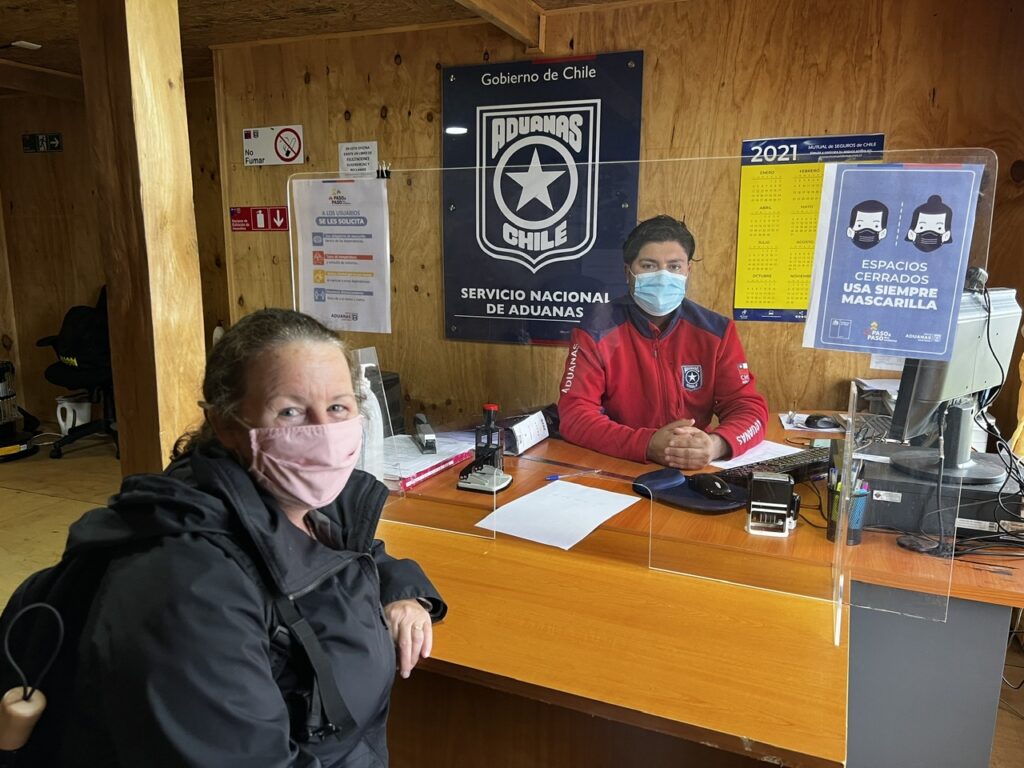
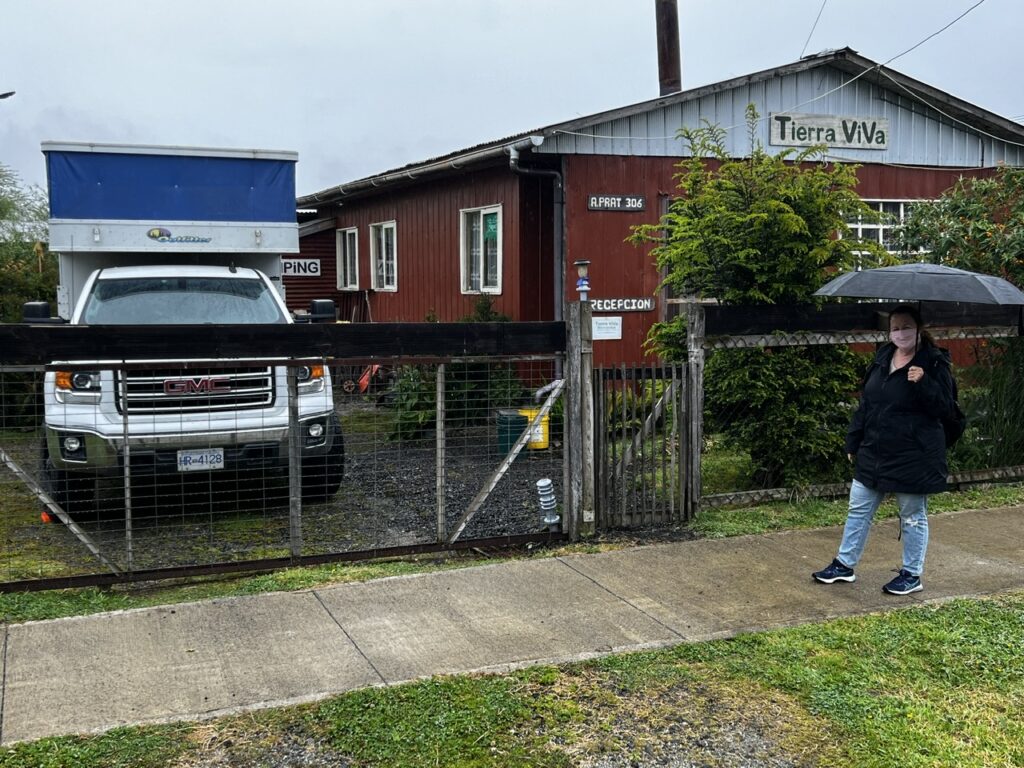
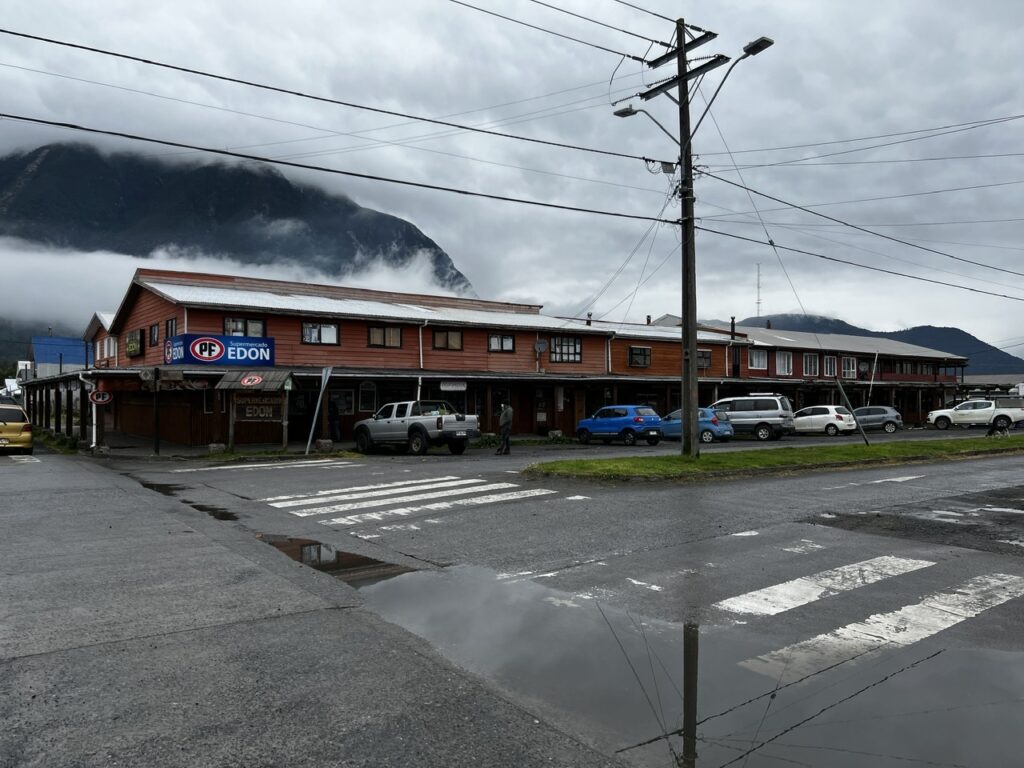
Based on some local recommendations from Andres, our host at Tierra Viva, we first went a little north on the Carretera before turning around and heading south. The road bisects Parc Pumaulin Douglas Tompkins, one of the more well known on the Carretera, a park established substantially due to the work of North Face ( outdoor gear ) founder Douglas Tompkins who spent significant time in the region.
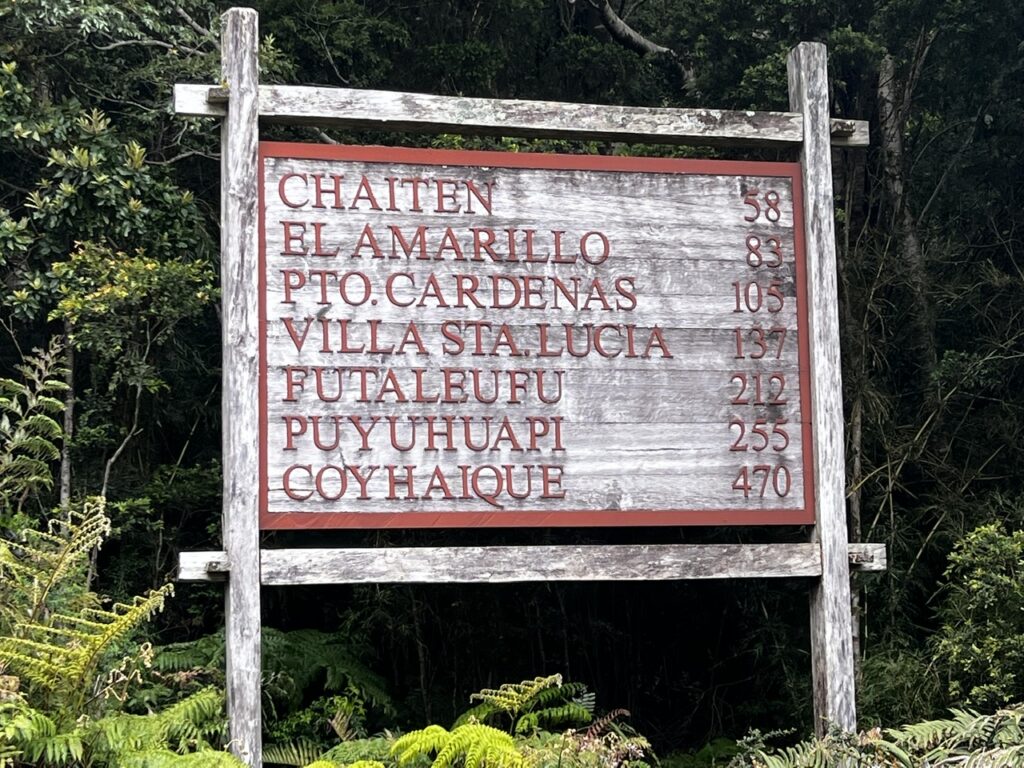
Noticed the first signs of what would be ongoing work on this road. Part gravel, part asphalt regardless it traverses difficult terrain and rock/mudslides are ever present risks – the road continues to be a work in progress.
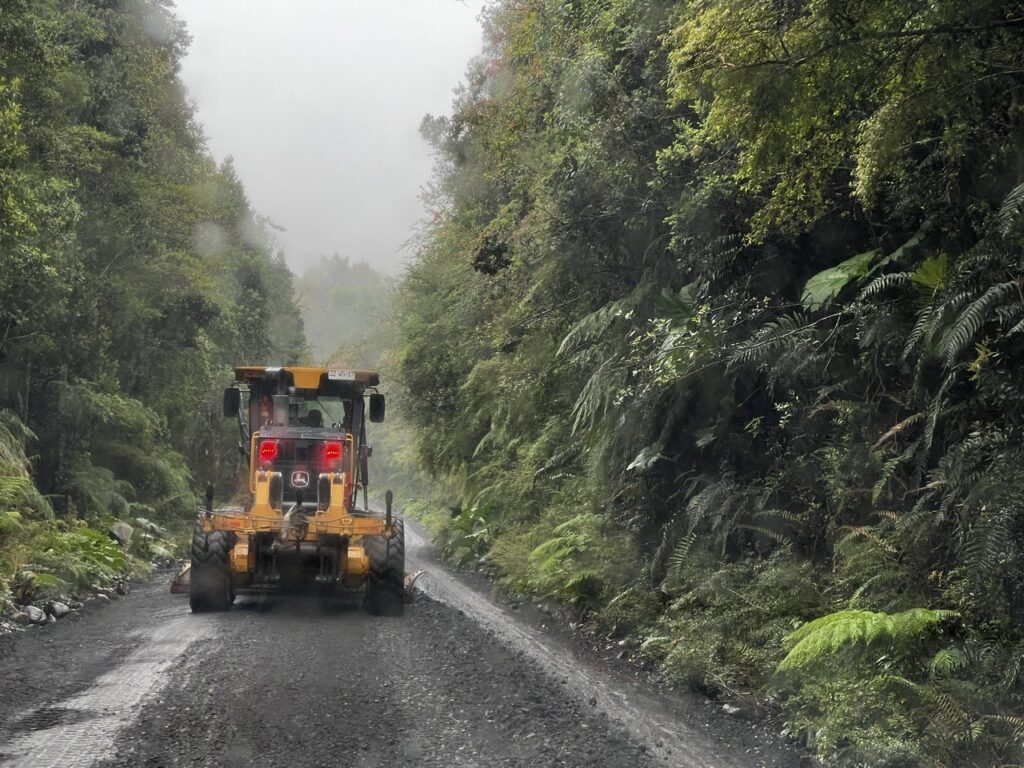
Andres’s recommendations both of the Sendero Laguna Tronador hike and the Sendero Cascadas Escondidas (waterfalls) hikes were well worthwhile and it was great to get out and stretch our legs on a couple of fairly short hikes. The giant alerce trees are indeed impressive ( related to North American sequoias, and can reach 4,000 years old ). We also came across a bunch of other weird and wonderful plants. Very reminiscent of Vancouver island and parks on the Oregon coast ( visited earlier on the PanAmericana).
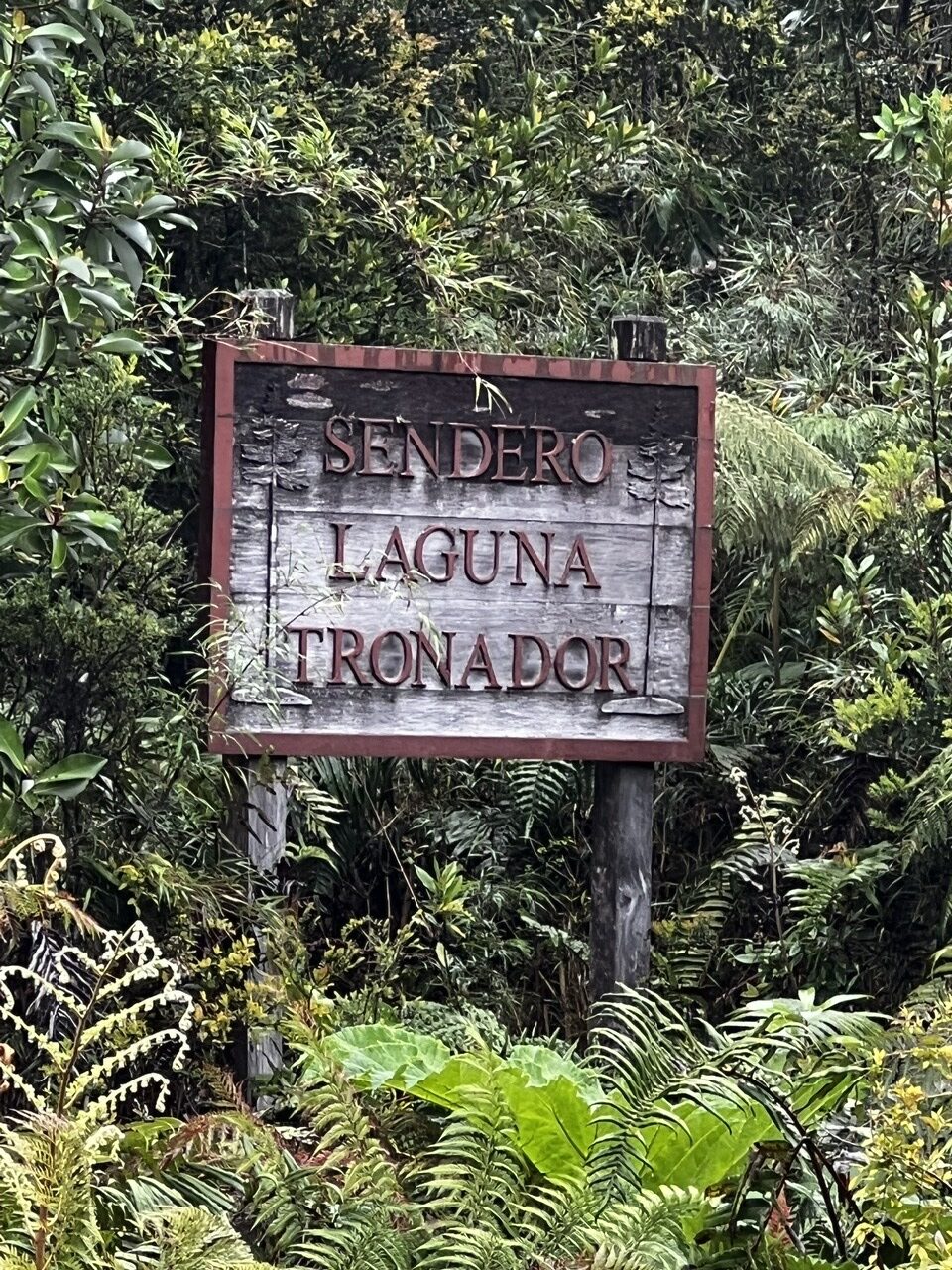
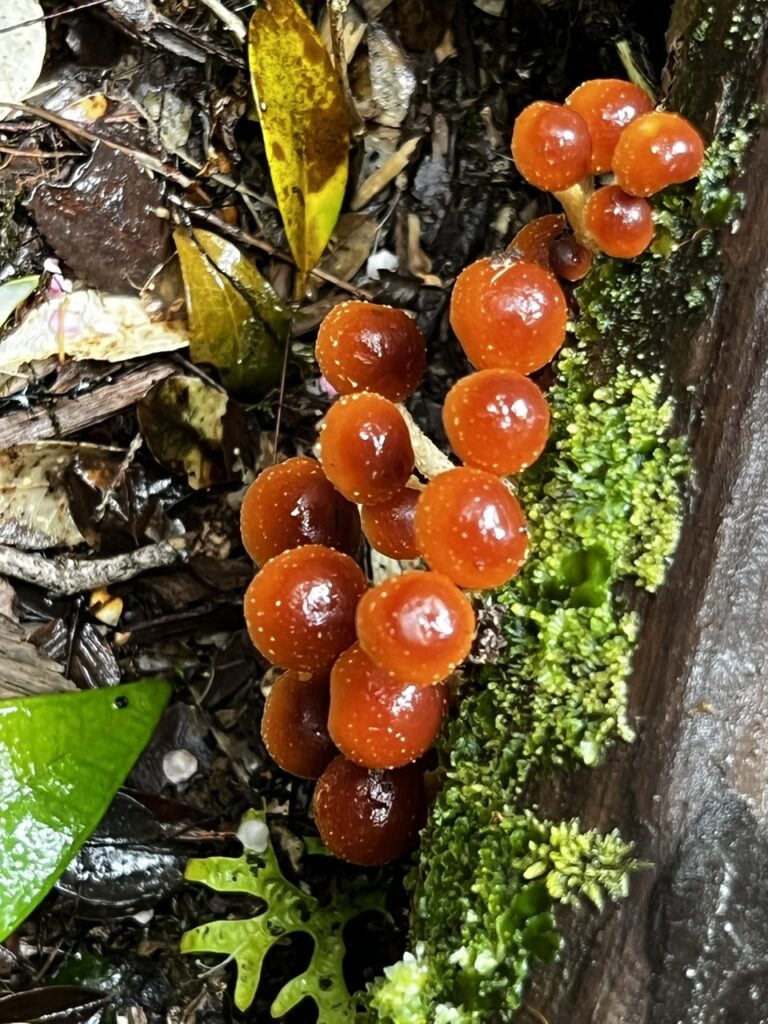
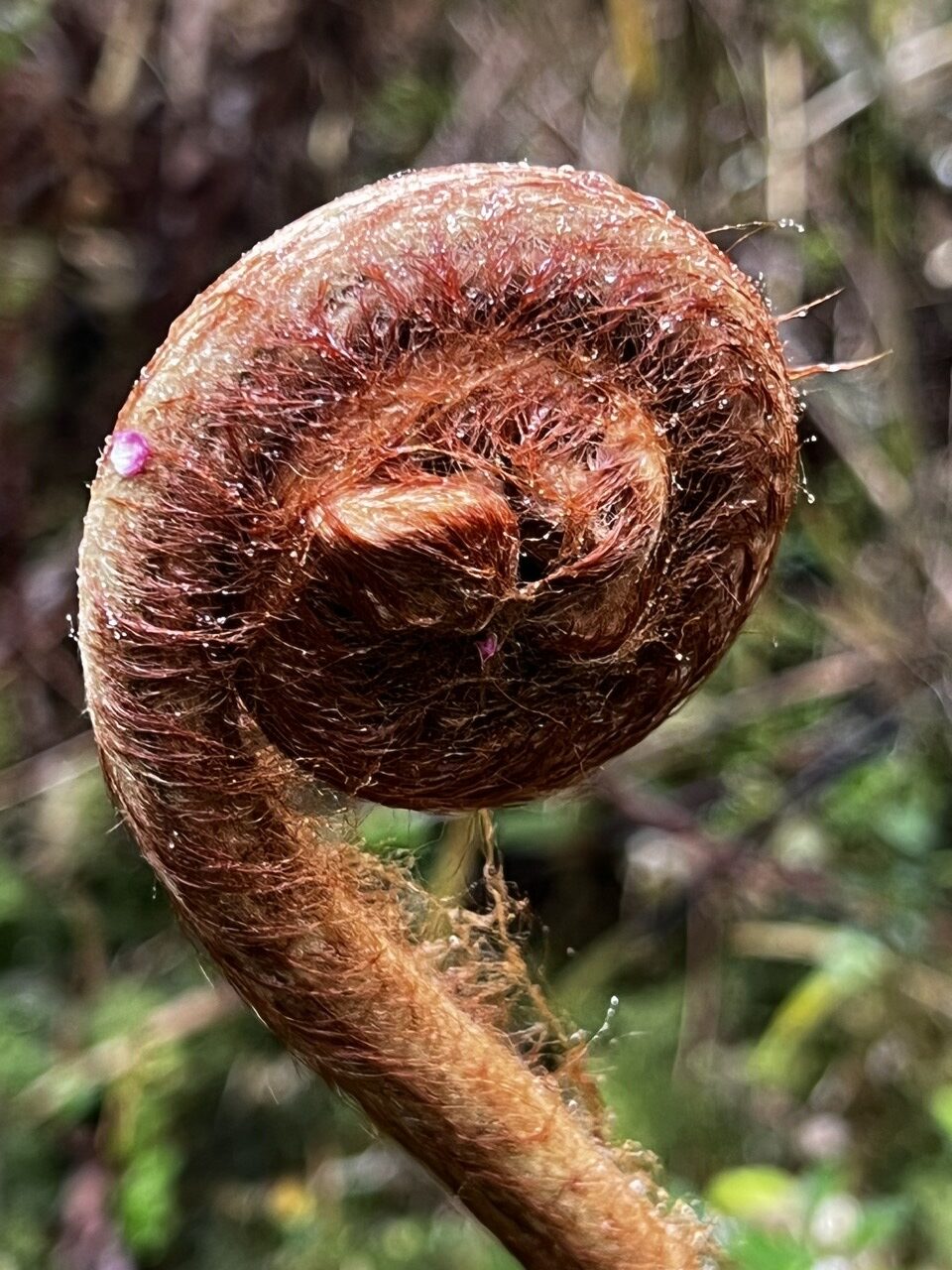
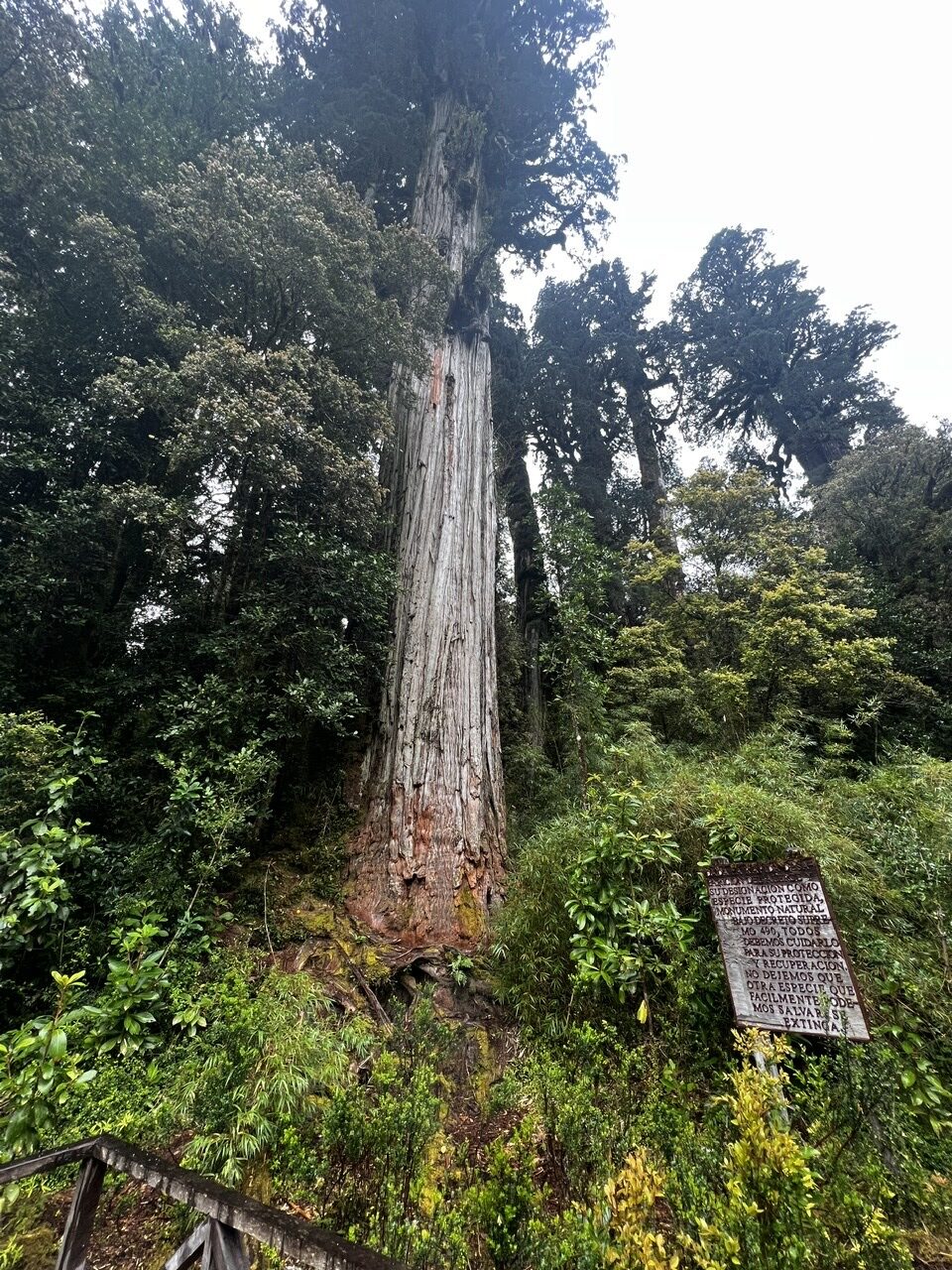
While very misty, it wasn’t exactly raining and we managed to see the two sites in pretty good conditions though in some cases rudimentary ( and almost vertical ) “ladders” had to be navigated to get to the falls; the destination justified the trek
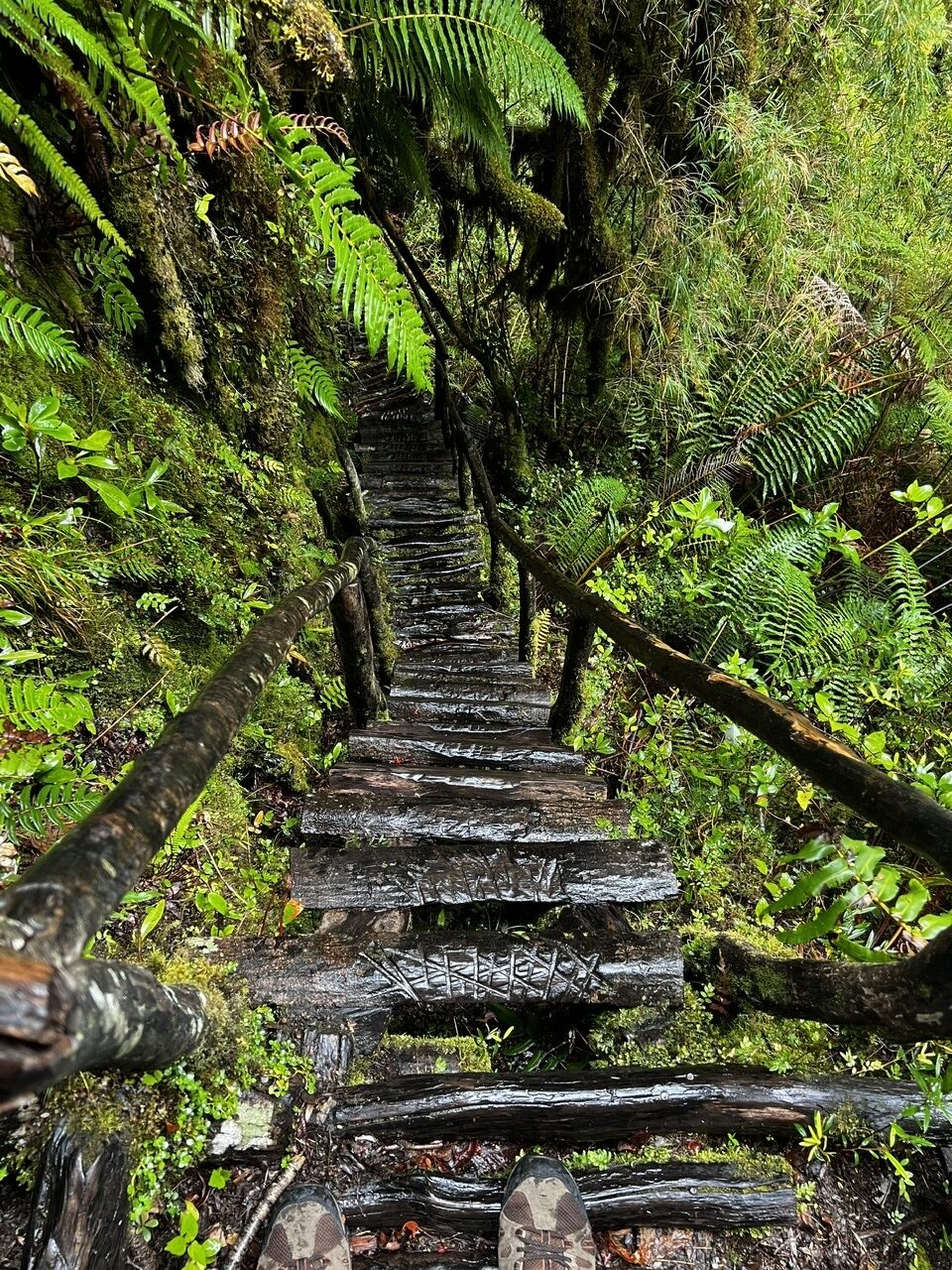
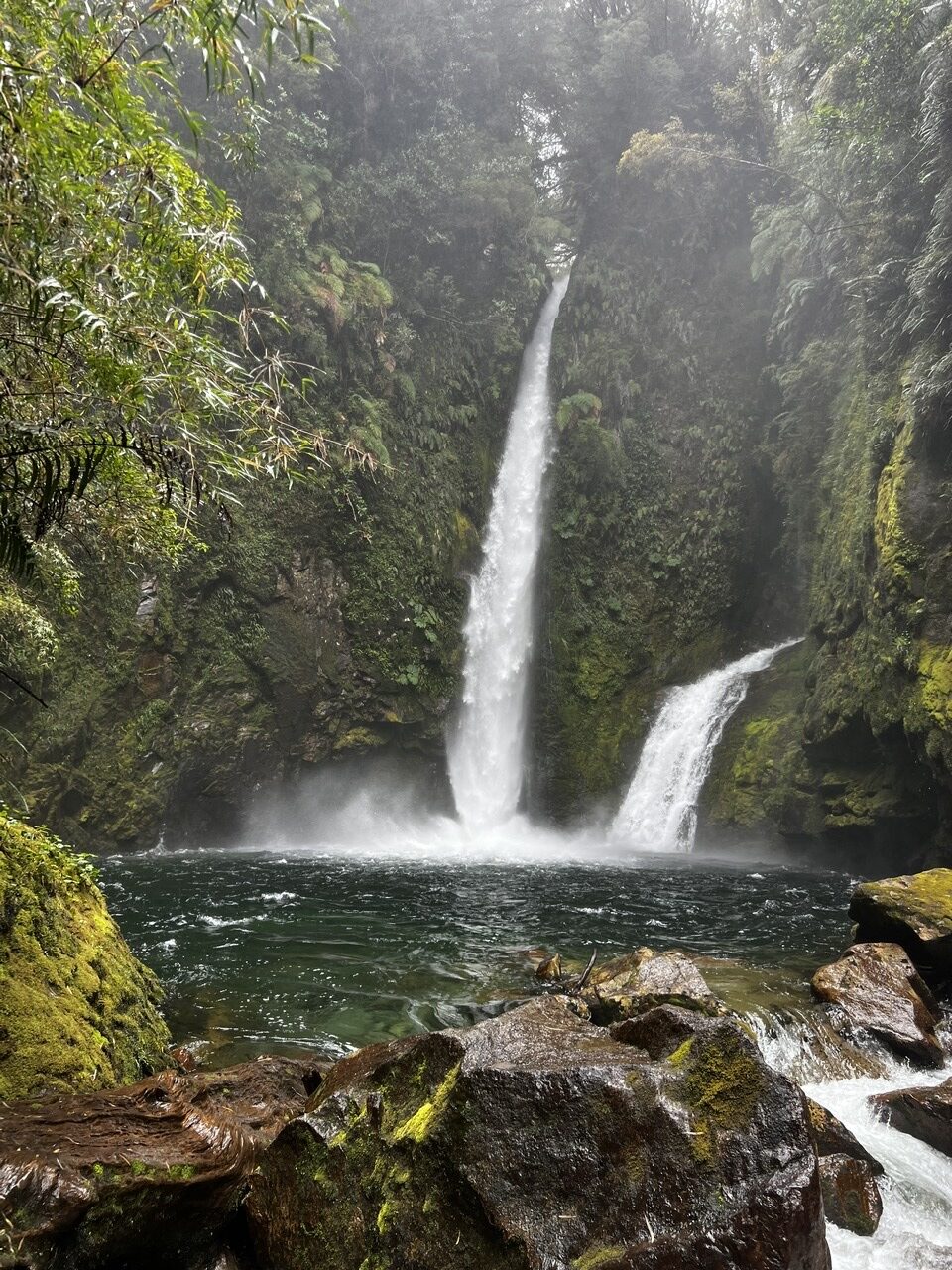
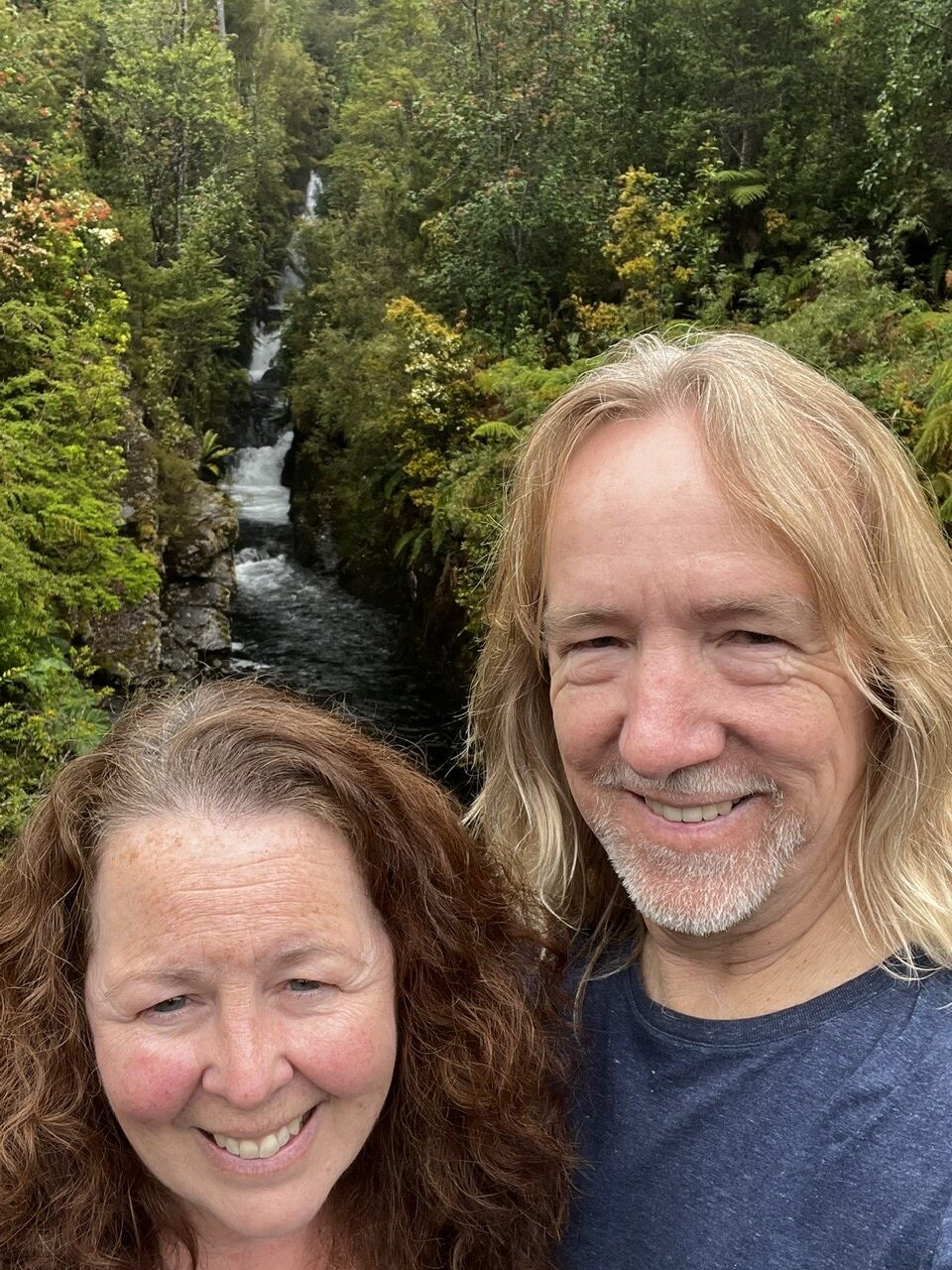
Futaleufeu was an easy drive and with better weather predicted there we made for this quaint little town near the Argentine border. The vehicle needed an airing out in some hotter weather after days of mist and light rain – any regular campers will know the feeling! The Futaleufu excursion was not just for the weather but also to soak up what is one the Carretera’s most popular “detour” drives and to take the opportunity to speak to border agents about the status (now and in December ) of the crossings to Argentina. The earlier good news we had heard about ALL frontier posts being open as of December 1 appears to have been a miscommunication so we needed factual and accurate information straight from the horses mouth so to speak. Absent more border posts opening in the south we would not simply be doing the Carretera Austral southbound but in all likelihood northbound as well making for a very circuitous route to southern Chile and Argentina.
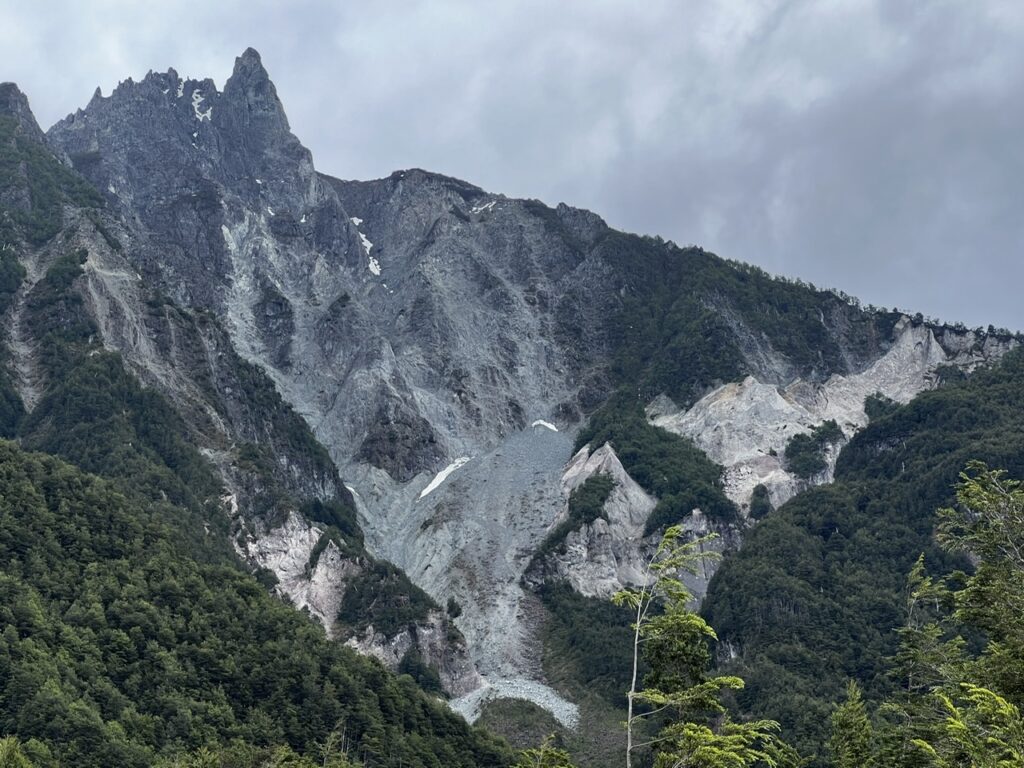
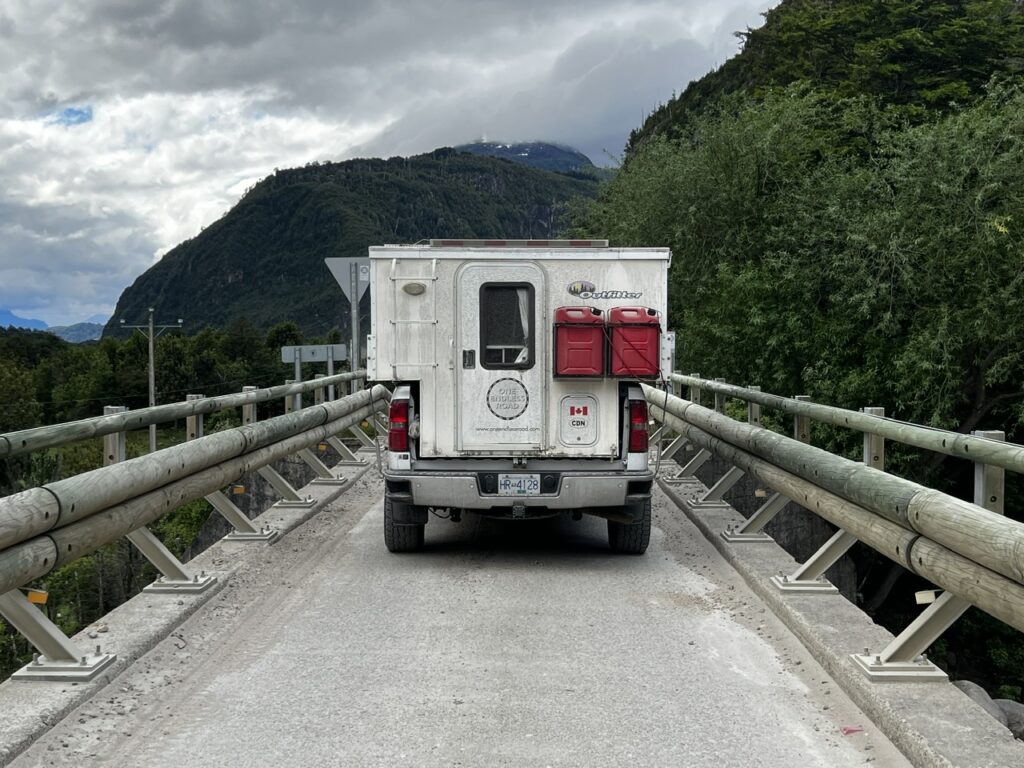
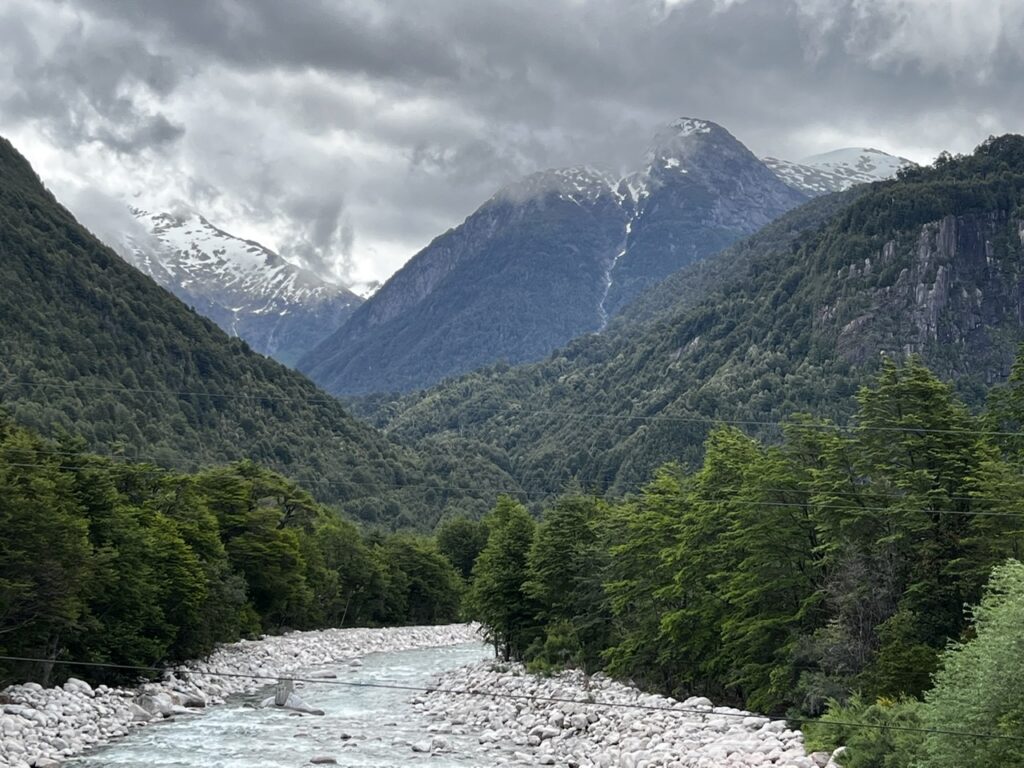
Futaleufu was predictably charming – an outdoorsy rafting/hiking/biking mecca, the town also had some great coffee shops and excellent food. Pizza de Fabio was highly recommended for his artisanal pizza and Fabio did not disappoint!
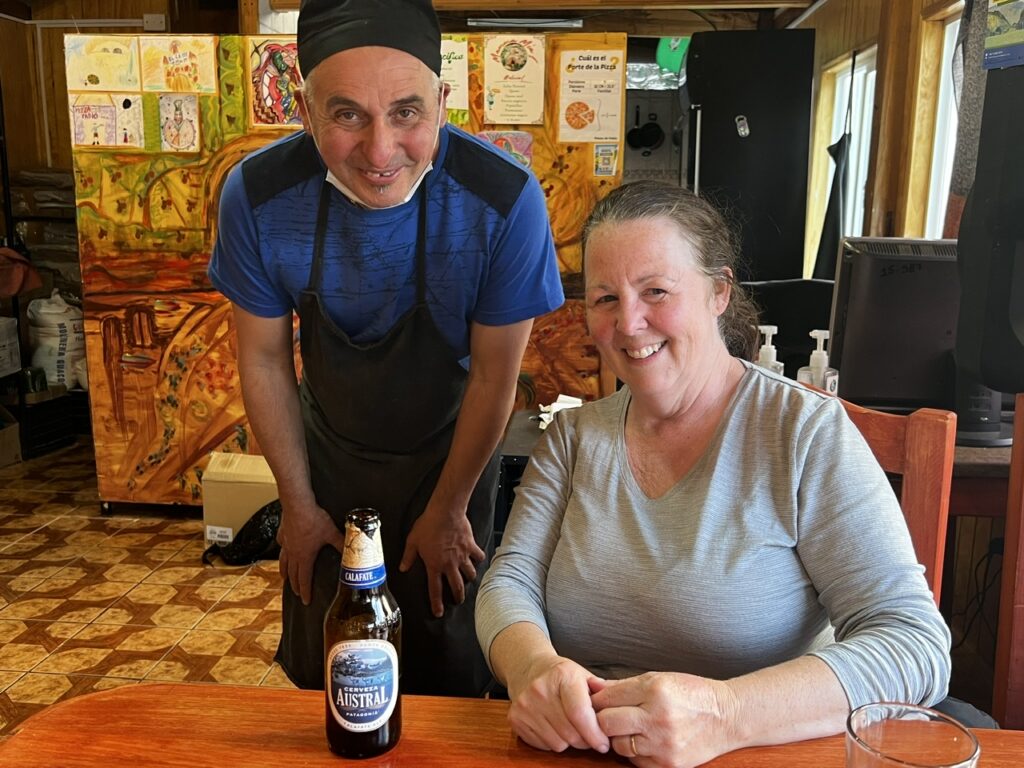
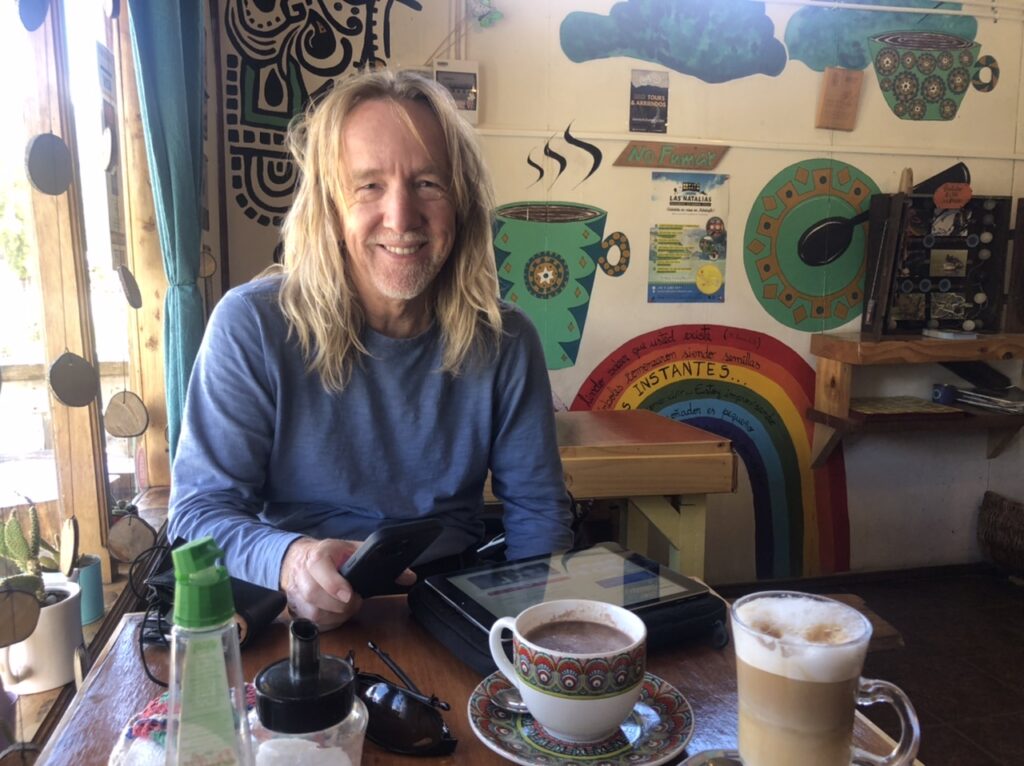
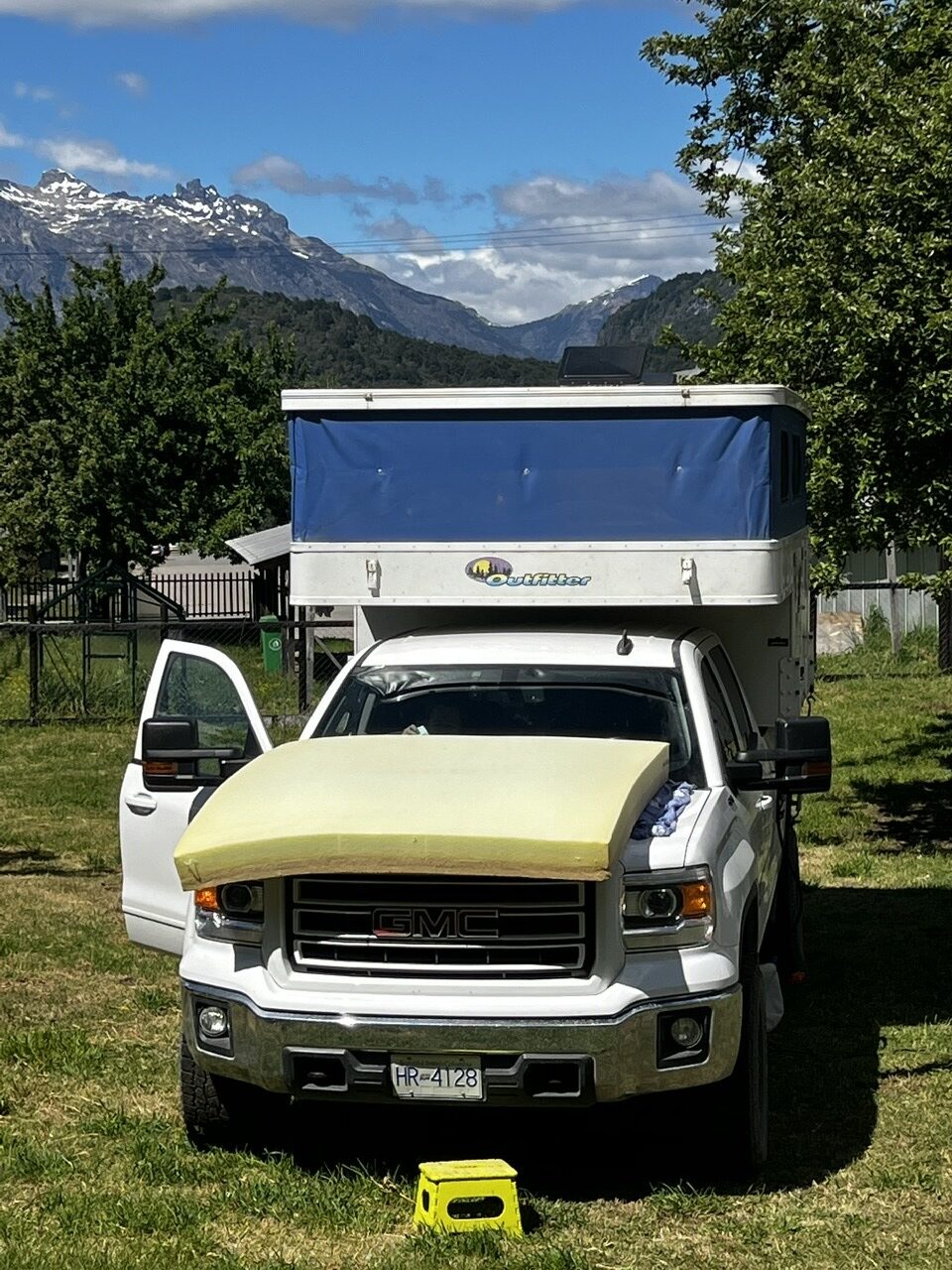
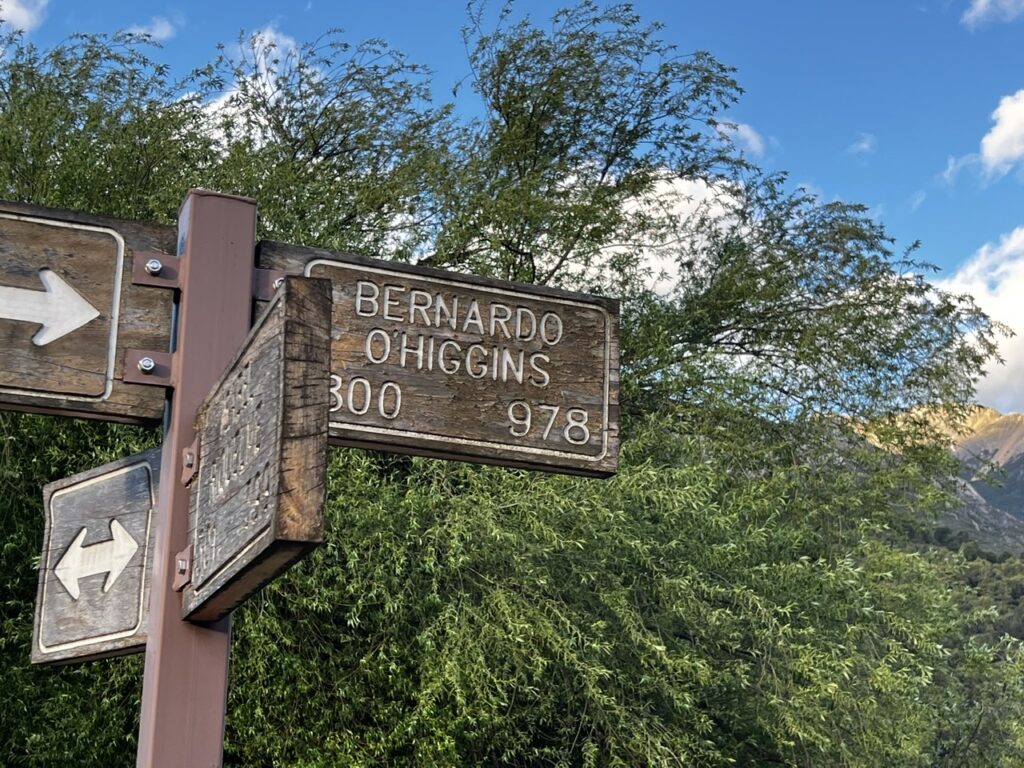
The Chileans have a great sense of humour – loved this sign in a shop we visited 😊
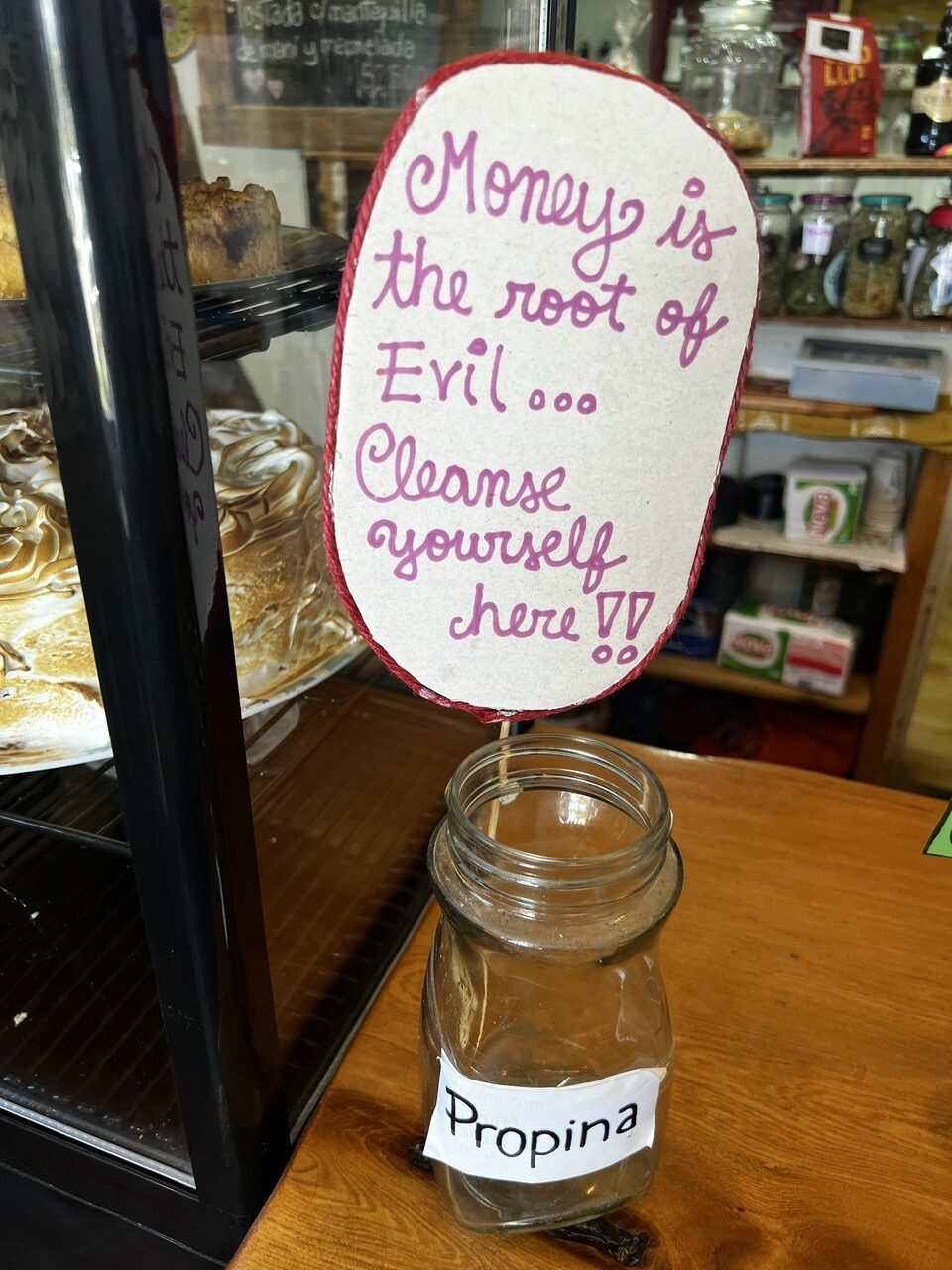
Following our discussion with the Aduana ( border officers ) in Futaleufu there was cause for optimism that at least one Chilean/Argentine border in the south will open by January 1 (currently none are ). In the week ahead there will be time to work that into our travel plans such that we can, very hopefully, still make it all the way to our goal of reaching Tierra Del Fuego.

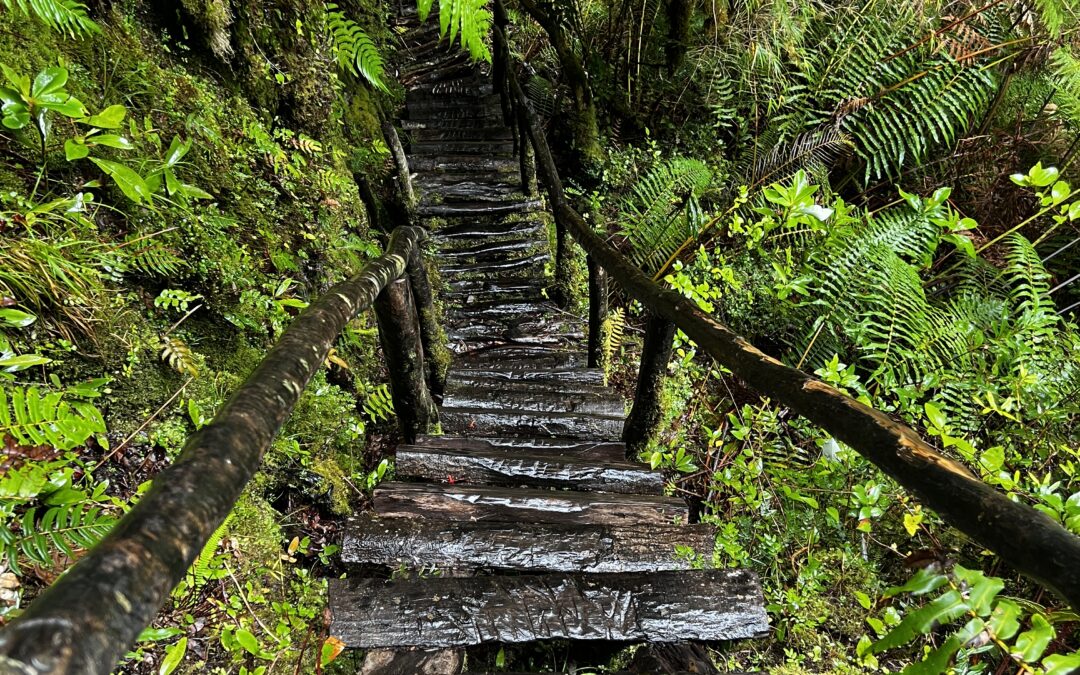
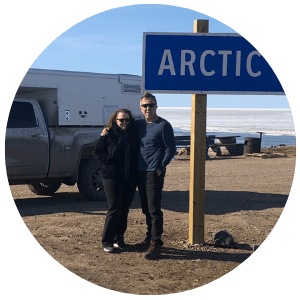
Damp notwithstanding, your trip sure looks good from my -6° perch in Prince Edward County 😱
Well, yes, it’s better than -6, that’s for sure ! And, not always damp, but something we have to watch…..hopefully it gets warmer in the weeks ahead but as the weather naturally gets warmer, we drive further south ( colder in the Southern Hemisphere ) so it kind of stays the same for us.
Love reading about your adventures! You are very brave! Look forward to hearing about your travels . We live in Kelowna too!
Not sure about “brave”, but a little bit “loco” as the Chileans sometimes say (lol ). And yes, I know you are from Kelowna, I remember the name ! Glad you are enjoying the stories, it’s fun putting it together.
Sitting in my hospital bed enjoying the read. So glad you are back doing what you love.
Thanks Kaz, and hope it cheered you up a bit…..!!! Not sure you heard but Nicks trip is now on hold due to Australia suddenly slapping a 3 days quarantine on all international arrivals. He will decide by tomorrow. Such a drag, he really wants to go.
Weather looks like familiar west coast of BC! What’s the temperature range where you are?
Hi Chris,
Yes, much of what we saw reminded us of BC. It’s starting to warm up but remember we are a long way south so “warm” is the low 20’s ! Today was a balmy 19 ! Google ‘ ventisquero colgante ‘….it’s where we hiked today. Just stunning, I will have some pics next week.
Once again you guys are inspiring. Definitely have to be very flexible and tranquillo. The photos are wonderful. I bet the aromas down there are great as well. Be safe. We are at Big White.
Hi Penny,
Glad you are up enjoying the snow already, seems early but I heard the show came early this year. Good for the mountain and I know they could use a good year. Sadly, now we all have to worry about the new Covid variant ( ughh ! )…hope it does not turn out to be too bad, I know everyone wants to get out and start travelling and it looks like doors are shutting again.
Amazing read. Sure is great you take us on your journey with us thru your updates. Oh, and I’ll take one of your essentials “Milka” too. Hahaha
Enjoy
Cheers
Yes, the “Milka” fall into the essentials category for sure ! Lol ! Are you back in K town now …?
Loved the pictures, such different plants and “tomatoes.” We just came back from beach camping at the OBX (outer banks NC). Love our outfitter camper ! I would love to travel with it to South America. Before we do that want to master enough Spanish. Heading to Montevideo for 5 months to study (apartment living ). Hopefully this new variant won’t get in the way !
Hi Anita!
Glad you are liking the camper and yes it has been a good solution down here – you do see a few ( more than I expected ). Great idea to spend 5 months in Uruguay, you will be a pro at Spanish ( we certainly are not !!!). And yes, fingers crossed on that variant – nasty one.
We love reading about your adventures! Great pictures!
The weather may be wet, but not as wet as it is here in Abbotsford,
Take care and continued safe travels.
Ed and Mae
Thanks guys, hope the worst of the flooding is behind you. How terrible it has all been. Stay safe !
The scenery on your hike looks like something out of Jurassic park! What a spectacular area. Safe travels!
Funny you should say that Oliver – we thought the same thing as we drove through the area 😊